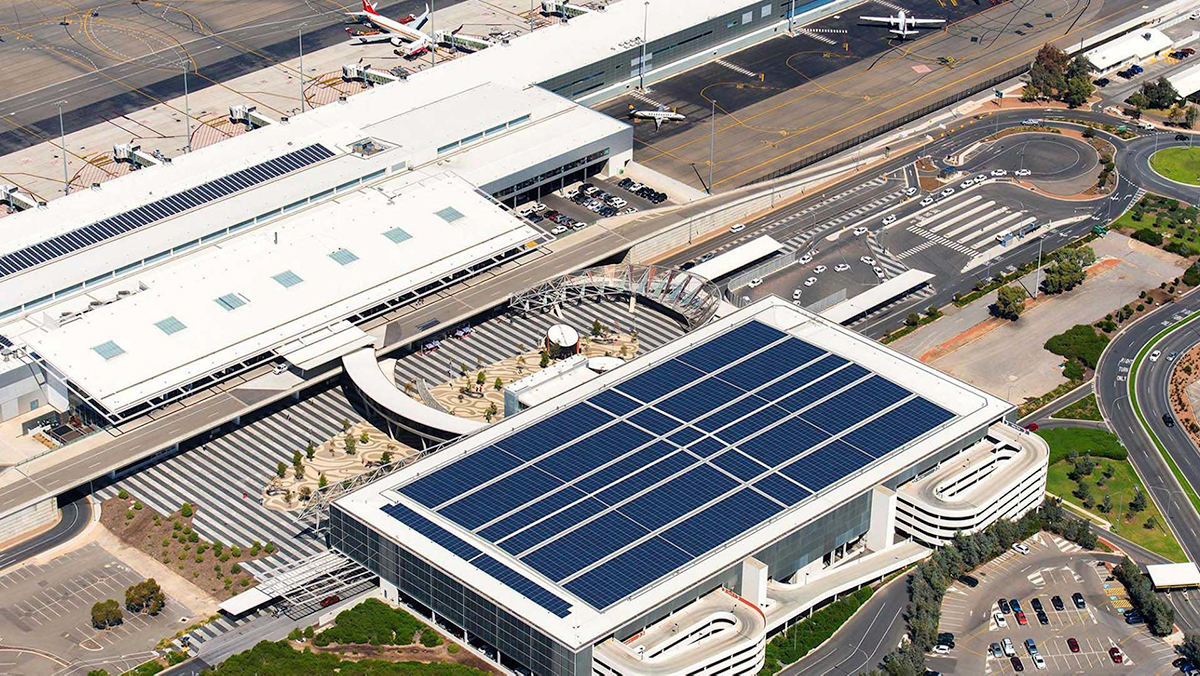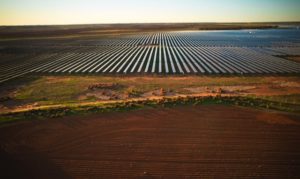Australia’s airports are going massively underutilised as potential hosts for large-scale solar projects, according to new research.
Researchers at RMIT University analysed the potential solar output that could be achieved by installing solar panels across unused roof space at 21 federally leased airports.
The study, published in the Journal of Building Engineering, found that combined, Australia’s major airports could host enough solar panels to power an equivalent of as many as 136,000 Australian homes.
The researchers said the findings highlighted the immense untapped potential of installing solar on large commercial buildings.
“We can’t rely on small residential solar panels to get us to a zero-emission economy, but installing large panels at locations like airports would get us a lot closer,” Researcher Dr Chayn Sun said.
“We hope our results will help guide energy policy, while informing future research in solar deployment for large buildings.”
“There’s so much potential to facilitate national economic development while contributing towards greenhouse gas emission reduction targets,” Dr Sun added.
The researchers said that airports were particularly suited to hosting solar panels, as they featured large areas of rooftop space that are not obscured by neighbouring tall buildings – providing ideal access to the sun.
“Australia is facing an energy crisis, yet our solar energy resources – such as airport rooftops – are being wasted,” Dr Sun said.
“Harnessing this power source would avoid 63 kilotons of coal being burned in Australia each year, an important step towards a zero-carbon future.”
The study used geospatial techniques to compare the performance of potential solar installations at airports to the performance of 17,000 residential solar installations in the town of Bendigo over the course of a year.
The study identified around 2.61 square kilometres of useful roof space, enough to produce around 467GWh of solar electricity each year.
Airports in Perth and Melbourne were found to have the highest untapped potential for solar energy production and had the potential to produce more solar energy from onsite installations than the entirety of Bendigo’s residential installations.
“Based on our solar radiation analysis, we know airports with decent solar systems could not only be self-sufficient but would generate enough electricity to send the excess back into the grid,” Dr Sun added.
“We mapped airports owned by the federal government, but Australia has more than 150 privately-owned airfields, which could also have panels installed.
“Australia received so much solar radiation, every airport in the country would benefit from having the right type of solar panels installed.”
Some Australian airports are already hosting to large rooftop solar installations, with the largest operating project being a 5.73MW installation at the Brisbane airport, completed by Epho in 2018.
Adelaide airport has featured a 1.17MW solar installation since 2016, and which itself followed one of the first commercial scale solar installations at the airport, of around 110kW completed in 2007.
Melbourne Airport recently commissioned an installation of a 12MW behind-the-meter solar installation that was constructed on land nearby to the airport.
A number of regional airports have also installed onsite solar projects, including 1MW systems in Alice Springs and Karratha and a 4MW project at Darwin Airport.










